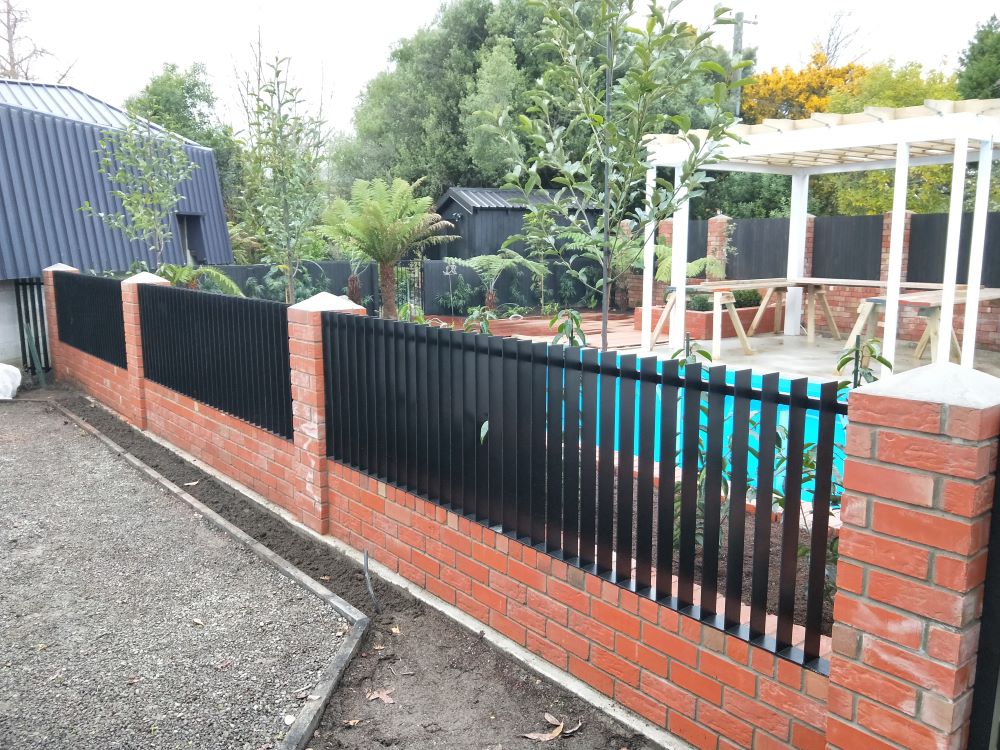Fencing is an essential feature of any property, whether for security, privacy, or enhancing the overall look of your home or land. In New Zealand, the unique climate—ranging from coastal areas exposed to salty winds to rural regions subject to heavy rainfall—makes choosing the right fencing material crucial. There are many uses for fencing in New Zealand, including pool fencing or for your front lawn. Durability is a key factor, ensuring your fence stands up to weather conditions while minimising maintenance costs.
When selecting a fencing material, it’s essential to consider its resistance to New Zealand’s weather extremes, the level of maintenance required, and its expected lifespan. To help you make an informed choice, this article explores the top five fencing materials best suited to New Zealand conditions.
Timber Fencing – A Classic Choice
Timber fencing remains a popular option for its timeless appeal and versatility. It blends seamlessly with both modern and traditional properties and can be customised to fit your specific needs. Additionally, New Zealand has abundant locally sourced timber options, such as treated pine and hardwood, making it an accessible and environmentally friendly choice.
However, timber fences require regular maintenance to prevent damage from moisture, pests, and UV rays. Regular staining, painting, or treating is necessary to ensure your fence doesn’t succumb to rot or warping. Despite this, many homeowners appreciate the charm and flexibility timber offers.
Timber fencing is particularly well-suited to residential properties and rural landscapes, where its natural look complements the environment. To maximise durability, opt for treated pine or hardwood, as these materials are better equipped to handle New Zealand’s challenging weather conditions.
Aluminium Fencing – Lightweight and Resilient
For those living near the coast or in areas prone to high humidity, aluminium fencing is a fantastic option. Its corrosion-resistant nature ensures that it won’t rust, even in salty air. Lightweight and low maintenance, aluminium is a practical solution for homeowners who prefer a “set-and-forget” approach.
While aluminium fencing may have a higher initial cost compared to some other materials, its durability and minimal upkeep requirements make it a worthwhile investment. It’s also available in a variety of modern designs, allowing for stylish yet functional boundaries.
This material is ideal for coastal properties, where it can withstand the harsh effects of salt spray. For enhanced longevity and a polished appearance, choose powder-coated aluminium, which resists fading and keeps your fence looking new for years.

Steel Fencing – The Strength Champion
Steel fencing is renowned for its strength and security, making it an excellent choice for properties that need robust boundaries. Its durability ensures it can handle New Zealand’s rough weather, from strong winds to heavy rain. Available in a range of modern designs, steel fencing can also add a sleek, industrial touch to your property.
That said, steel can be prone to rust if not properly treated. Regular inspections and occasional maintenance are necessary to keep it in top condition. Choosing galvanised or stainless steel significantly reduces the risk of rust and extends the fence’s lifespan.
Steel fencing is best suited for high-security applications and harsh environments. If you’re after a long-lasting, sturdy solution, steel is hard to beat.
Vinyl (PVC) Fencing – The Low-Maintenance Option
Vinyl fencing has gained popularity for its impressive durability and low-maintenance properties. Resistant to weather, pests, and UV damage, vinyl can withstand the elements without the need for frequent repairs or treatments. Its smooth surface makes it easy to clean, and it’s available in a variety of colours and styles to suit different properties.
The downside is that vinyl fencing typically has a higher upfront cost and less customisation compared to timber or steel. However, its long lifespan and minimal upkeep can offset these initial expenses over time.
Vinyl is an excellent option for suburban homes and decorative fencing, where its clean appearance and reliable performance shine. Make sure to select UV-stabilised vinyl to handle New Zealand’s strong sunlight effectively.
Wire Fencing – Practical for Rural Use
For farms and rural properties, wire fencing is a practical and cost-effective choice. It’s lightweight, easy to install, and does an excellent job of containing livestock or marking property boundaries. High-tensile wire and coated options provide added durability, ensuring the fence lasts longer despite exposure to the elements.
However, wire fencing isn’t the most visually appealing choice, so it’s less suited to residential properties where aesthetics matter. In rural settings, its affordability and functionality outweigh any drawbacks.
To improve its resilience, opt for galvanised wire or products coated to resist rust and wear. This ensures your wire fence can withstand New Zealand’s variable climate while remaining secure and effective.
Fencing For Your Home’s Safety
Choosing the right fencing material is vital for ensuring your fence can withstand New Zealand’s varied climate while meeting your needs for security, privacy, or aesthetics. Timber offers a natural, classic look, while aluminium and vinyl are great low-maintenance options for coastal and suburban areas. Steel is the go-to for strength and durability, and wire fencing remains a practical choice for rural properties.
For the best results, consult with a local fencing expert to discuss your specific requirements. A well-chosen fence will not only protect your property but also add lasting value and appeal.